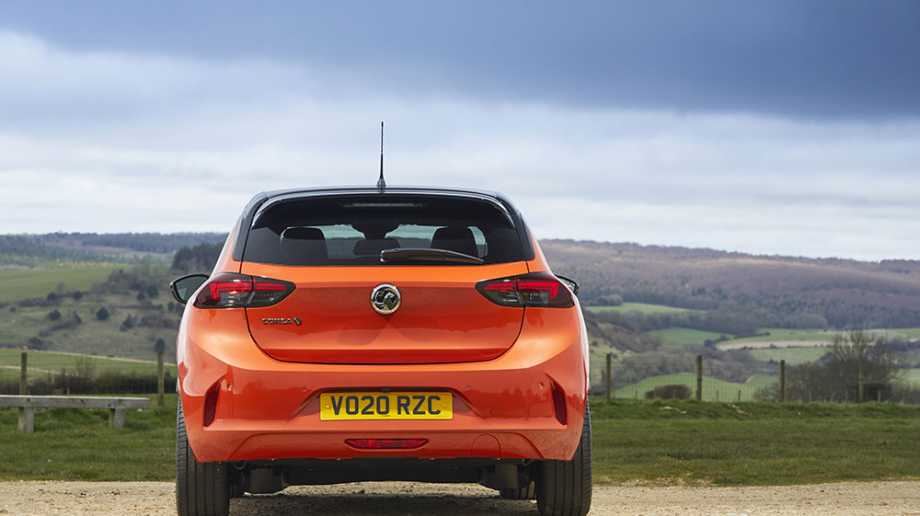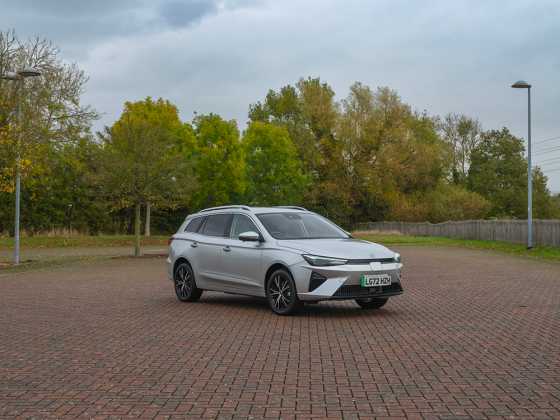Vauxhall Corsa Elite Nav 11kW

Vauxhall's first all-electric car, Richard Gooding discovers the Vauxhall Corsa-e's efficient and ease-of-use personality should win it many fleet friends
What is it?
Now part of the Stellantis group, Vauxhall can rely on electrification technology developed by other brands to power its models. The Corsa-e is based on the 'e-Common Modular Platform' (e-CMP) also shared with the Peugeot e-208 and DS 3 Crossback E-Tense, and is now joined by the Mokka-e SUV and a range of electric light commercials.
What range does it have?
The Corsa-e's 100kW/134bhp electric motor and 50kWh lithium-ion battery are good for a quoted 209 miles of range. In real-world conditions, we recorded a 178-mile maximum range in, admittedly colder weather conditions, but after also testing the electric 208 and DS 3 Crossback, the Corsa-e was the car that came closest to its quoted range.
How long does it take to charge?
The Corsa-e comes with a choice of 7.4kW or 11kW on-board chargers. This means while the 7 hours and 30-minute charge time on a 7kW home wallbox doesn't change, the 15-80 per cent charge time is reduced from 5 hours to 3 hours and 20 minutes on a 22kW point if you choose the more powerful charger-equipped car. The respective 45 and 30 minutes the 7.4kW-spec and 11kW-spec cars take to charge from 15-80 per cent capacity on 50kW and 100kw rapid chargers are also the same. On a three-pin domestic 2.3kW/10A supply, the Corsa-e takes just over 24 hours to charge from 0-100 per cent capacity.
How does it drive?
More stylish than previous Corsas, Vauxhall's latest small car is a nicely styled machine. A black roof on SRi Nav Premium models and above gives a more personalised appearance, and if you choose the optional £550 Voltaic Blue or £650 Power Orange paint, the Corsa-e is even more distinctive.
The cabin is typically Vauxhall, with cautious and sensible styling, but that's not to detract from its usability. The seven-inch digital instrument display gives a wealth of information pertaining to range and economy, and as opposed to some other small cars, Vauxhall has resisted the urge to bury the climate controls in the cental touchscreen menus, a bank of physical controls sited underneath the infotainment system. Material quality is improved over previous Corsas, too.
The Corsa-e's 192lb ft/260Nm of torque gives it a brisk feeling and it nips in and out of city traffic with ease. Direct steering and a helpful agility mean piloting the Corsa-e is very easy, and the car has a much quieter ride than its Peugeot relative, resulting in a more refined feel on the move. Three driving modes – Normal, Eco and Sport – tailor the driving experience and two-stage regenerative braking allows for near-one pedal operation. A gear lever sprouting from the centre console just needs a gentle tap back to activate the more severe 'B' mode, another thing in keeping with the electric Vauxhall's ease of use nature.
What does it cost?
Vauxhall has kept the Corsa-e range quite simple, with just three trim levels to choose from. After the Government Plug-in Car Grant (PiCG), the entry level SE Nav Premium model costs £27,140 and comes with 16-inch alloy wheels, auto lights and wipers, climate control, cruise control, LED headlights, keyless start, a seven-inch digital instrument cluster and a colour touchscreen infotainment system of the same size.
The SRi Nav Premium models begin from £28,390 and adds 17-inch alloy wheels, LED tail lights, sports seats, rear privacy glass, a black roof and black A-pillars. As tested here, the range-topping Corsa-e Elite Nav Premium is priced from £30,545, our car being the 11kW version at £31,395. Standard equipment includes LED Matrix headlights, part-leather trim, a rear view camera, as well as a 10-inch colour infotainment touchscreen system.
How much does it cost to tax?
In common will all EVs, Vauxhall's electric supermini is exempt from VED charges, both in the first and following years. The zero-emission Corsa also attracts a one per cent Benefit in Kind (BIK) rate for 2021-2022, rising to two per cent in 2022-2023 and 2023-2024.
Why does my fleet need one?
It might shares technology with other cars in the Stellantis empire, but that's not to take away the job that Vauxhall has done with the Corsa-e. A wholly resolved and good to drive machine, its ease of use and relative 'normality' shouldn't put off fleet drivers who aren't used to driving electric.
Its interior might be lacking some of the pizazz of its Peugeot e-208 stablemate, but its simpler style will benefit those same new EV drivers. Cheaper than both its Peugeot and DS in-house rivals, the small electric Vauxhall will attract drivers wanting a fuss-free and efficient EV package from a trusted and well-respected brand.









